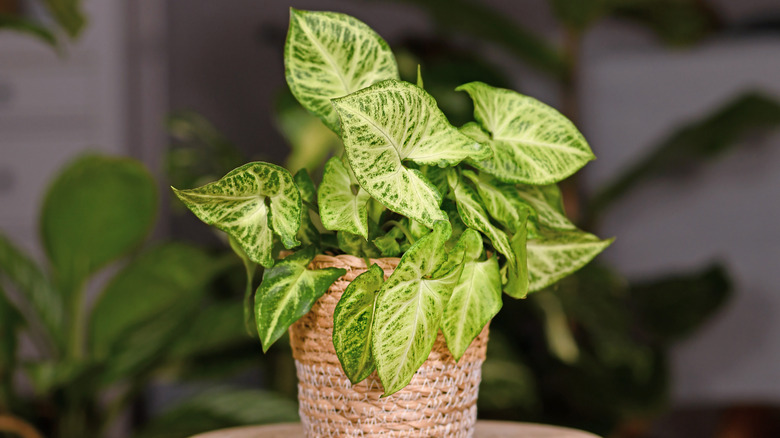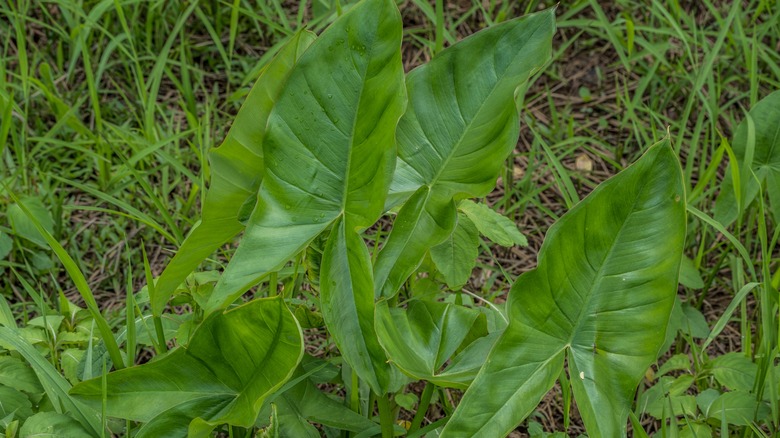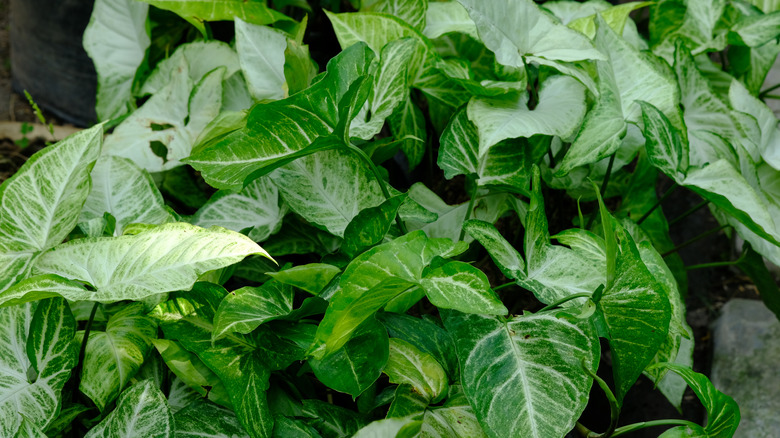Common Mistakes To Avoid If You Are Growing An Arrowhead Plant
The Arrowhead plant (Syngonium podophyllum) is a beautiful vining tropical plant native to Central and South America. It is a common and widely loved house plant due to its unique coloration and beautiful leaf shape. However, the Global Invasive Species Database classifies it as an invasive species, so it should never be planted in the ground. Aside from being planted in the ground, there are some other common mistakes people make with their Arrowhead plants that make them look lackluster and unhappy. Chiefly, the most common mistakes people make with their Arrowhead plants are putting them in the ground, placing them in direct sun, overwatering, and using the wrong type of soil mix.
That being said, it's a gorgeous houseplant that can create a lush jungle vibe in your home! The common name, Arrowhead, is derived from its leaf shape that resembles an arrowhead. There are many varieties with unique colorations ranging from white and light green to even pink. While Arrowhead plants are one of the easier houseplants to care for, these key and seemingly minor mistakes can be fatal for your beloved tropical houseplant. Once you learn how to care for your Arrowhead plant properly, it will be an absolute breeze, and your luscious and vibrant plant will thank you!
Don't plant your Arrowhead plant in the ground
In warmer climates, the number one mistake people tend to make is planting their Arrowhead plants in the ground. Arrowhead plants or Syngoniums are considered an invasive species and have caused significant damage to natural areas. Their beautiful and tropical appearance can make it tempting to plant them in the landscape. However, their impact on natural spaces is detrimental and can quickly get out of hand. Furthermore, Arrowhead plants, in all their wonder and beauty, should be reserved for the home.
When caring for any kind of plant, houseplant or not, your goal should always be to replicate their natural environment wherever possible. This ensures that the plant has a chance at being happy and thriving because you are setting up conditions in which the plant has evolved. Syngoniums, or Arrowhead plants, are native to the humid, tropical rainforests of Central and South America, where they grow in indirect light and well-draining, fertile soils. In your home, you want to recreate these conditions wherever possible. This can look like placing your Syngonium in bright, indirect light instead of direct sunlight. A few feet away from a north or west-facing window is typically ideal for placement. Additionally, since Syngoniums love humidity, placing them in a humid area in your house, like the bathroom, is perfect. Another option is placing a water dish with pebbles near your Arrowhead plant to increase humidity.
Use the right soil mixture, and be sure not to overwater
Soil mixtures can make or break any houseplant, but especially when it comes to Arrowhead plants. As we briefly mentioned above, Arrowhead plants hail from a part of the world with some of the richest and most fertile soils. Thus, if you want healthy and abundant Arrowhead plants in your home, you must do your best to replicate this soil. You want to plant your arrowhead in a well-draining, nutrient-rich potting mix similar to the growing conditions the Arrowhead plant is accustomed to. The best kind of soil mix for an Arrowhead plant is peat-based soil. You can make this mix by adding peat moss to a regular potting mix or find one online.
Overwatering is a huge problem when it comes to houseplants. In fact, one of the top reasons houseplants die is from people overwatering their plants! Syngoniums are no exception. A good rule of thumb is to implement the finger trick; essentially, you stick your finger into the soil, and if it's dry, you know it's time to water. If your finger comes out with some soil remnants and feels moist, it's best to leave it alone. With Syngoniums, you want to ensure they never dry out completely, but you also want to avoid overwatering. The finger trick is your best bet when gauging how much and when to water your Arrowhead plant!


